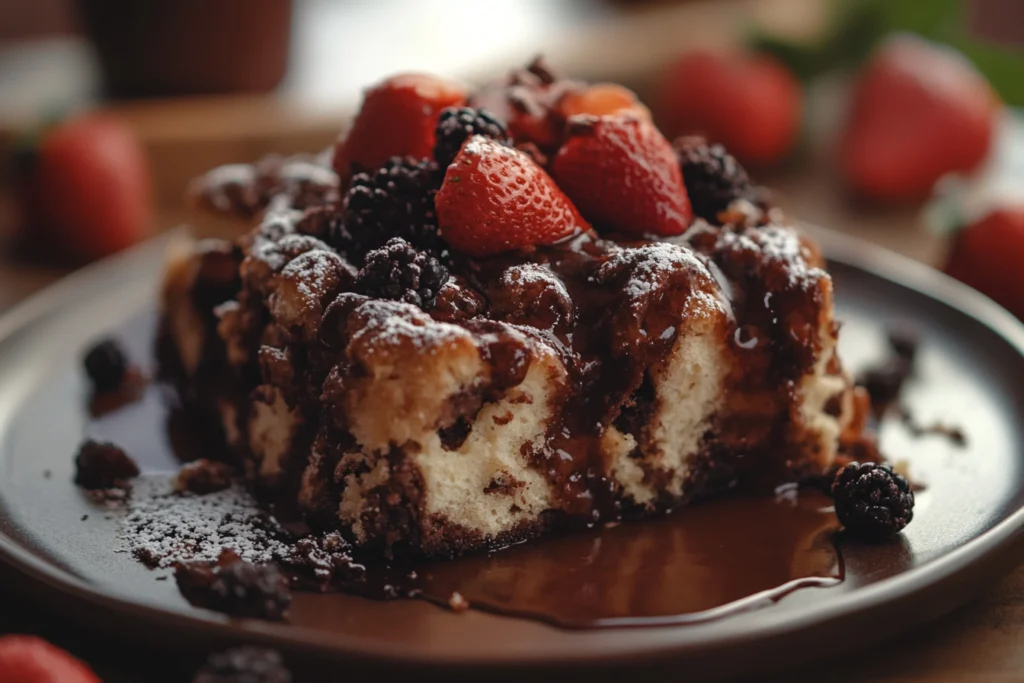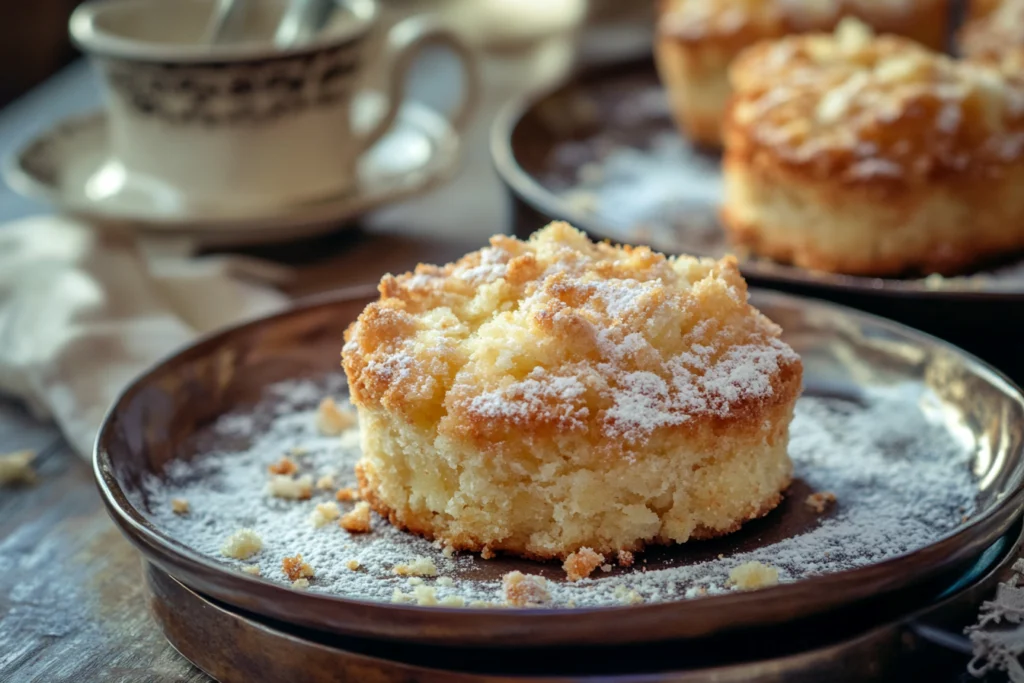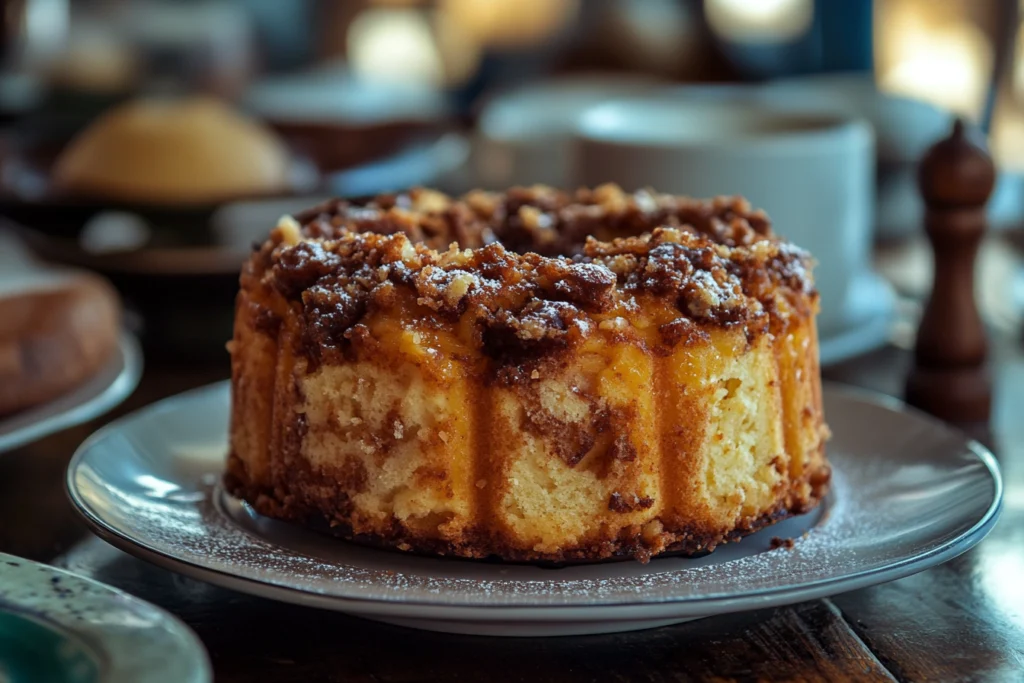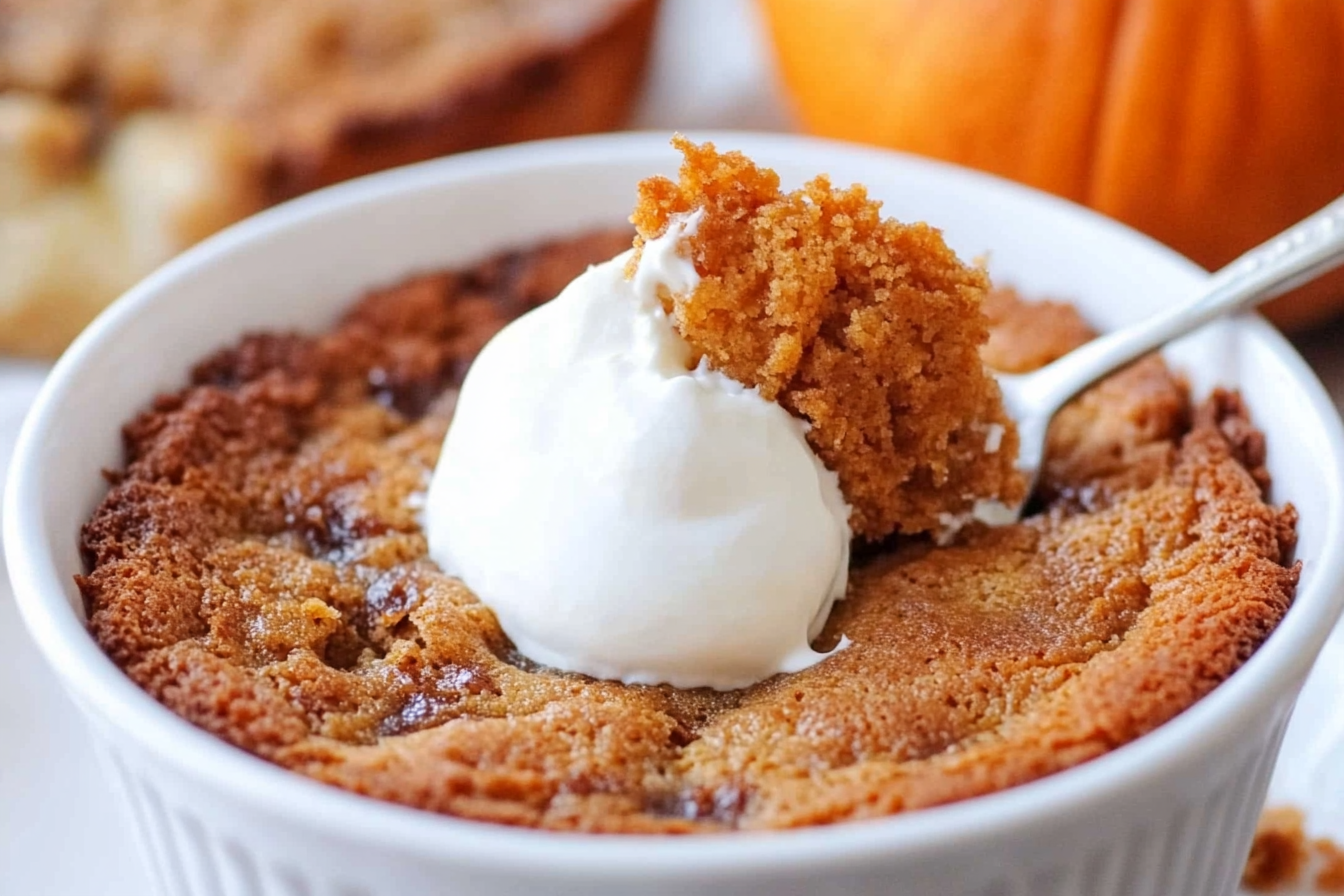What Are Dump Cakes?
Dump cakes are a delightful and simple dessert that epitomize the phrase, “less is more.” Unlike traditional cakes, which often require precise mixing and detailed steps, dump cakes are remarkably easy to make. Their name comes from the method: you simply “dump” the ingredients into a baking dish, layer them strategically, and bake. They’re a perfect dessert for beginners and seasoned bakers alike who value flavor without the fuss.
History and Origins of Dump Cakes

The history of dump cakes is deeply tied to American baking culture. While variations of fruit-and-crust desserts have existed for centuries, dump cakes gained prominence in the mid-20th century, coinciding with the rise of pre-packaged cake mixes. These mixes offered convenience to households, and creative home bakers experimented with new ways to use them.
Why Are They Called “Dump” Cakes?
The term “dump cake” reflects the no-frills approach to making these desserts. There’s no mixing bowl or electric mixer involved—just a baking dish where layers of fruit, cake mix, and butter come together. This simplicity not only reduces cleanup but also aligns with the cake’s rustic charm.
The Core Ingredients of a Dump Cake
The typical ingredients for a dump cake include:
- Fruit or pie filling (canned or fresh)
- Cake mix (boxed varieties are most common)
- Butter (to create the golden crust)
Optional ingredients might include nuts, spices, or additional toppings to personalize the dessert.
How Dump Cakes Differ From Traditional Cakes
Unlike traditional cakes, which rely on a blend of wet and dry ingredients to form a batter, dump cakes leverage layering. Traditional cakes focus on structure and rise, whereas dump cakes emphasize a contrast of textures—juicy fruit, tender cake, and crispy toppings.
Popularity of Dump Cakes in Modern Baking
Dump cakes have experienced a resurgence, thanks to their adaptability and ease. In the era of viral recipes and busy lifestyles, these cakes are the ideal solution for anyone craving a homemade dessert without hours of effort.
Cultural Variations of Dump Cakes
While the concept of “dump cakes” is largely American, many cultures have similar desserts:
- Cobbler-style cakes in the Southern United States
- Fruit crisps and crumbles in Europe
- Layered desserts like trifle, which use a similar stacking concept
Each variation highlights the universal appeal of combining fruits, starches, and fats for a quick and satisfying dessert.
The Science Behind Dump Cakes
How Layering Affects Baking Outcomes
The layering process is crucial in dump cakes. When the butter melts, it soaks into the cake mix and interacts with the fruit’s juices. This process:
- Creates a soft, pudding-like base
- Forms a golden crust on top
Common Misconceptions About Dump Cakes
One common myth is that dump cakes are overly sweet or lack complexity. However, by carefully choosing ingredients—such as tart fruits or spice-infused cake mixes—you can achieve a balance of flavors.
Part 2: The No-Mix Approach
Why Aren’t Dump Cakes Mixed?
The beauty of dump cakes lies in their simplicity—and that includes skipping the mixing process. Unlike traditional cakes where blending ingredients ensures uniformity, the lack of mixing in dump cakes is intentional. By not mixing, you allow the individual layers to interact in unique ways during baking, resulting in a dessert with diverse textures and flavors.
The separation of ingredients means the cake mix absorbs moisture unevenly, creating pockets of crumbly texture alongside areas of moist, pudding-like softness. This unique feature is part of what makes dump cakes so distinct and beloved.
Importance of Layering Ingredients in Dump Cakes
Layering is the secret sauce of a perfect dump cake. Each layer serves a specific role:

- Base Layer: Usually fruit or pie filling, it provides sweetness, moisture, and flavor.
- Middle Layer: Dry cake mix, which acts as the foundation for the buttery crust.
- Top Layer: Sliced or melted butter that permeates the cake mix, creating a golden, crispy topping.
Role of Cake Mix in the No-Mix Process
The cake mix in dump cakes isn’t just a shortcut; it’s the backbone of the dessert. Its dry ingredients, including flour, sugar, and leavening agents, react with the fruit juices and melted butter during baking to create:
- A soft, cake-like texture in the middle
- A golden crust on top
Pre-packaged cake mixes, such as yellow or white varieties, are popular for their consistency, but homemade dry mixes work just as well for a more personalized touch.
How Butter Distribution Impacts the Cake
Butter plays a critical role in the texture and appearance of dump cakes. Evenly distributing slices of butter ensures:
- Proper hydration of the cake mix
- Uniform browning of the crust
- A rich, buttery flavor in every bite
Pro Tip: Use cold butter and slice it thinly to cover as much surface area as possible.
Moisture Distribution Without Mixing
Without mixing, moisture moves naturally through the layers. The fruit layer at the bottom releases juices as it bakes, which:
- Softens the cake mix above
- Combines with melted butter to create a luscious texture
The result? A dessert that is both crispy and tender, sweet and tangy.
Texture and Flavor Benefits of Not Mixing
The no-mix approach enhances both the texture and flavor profile of dump cakes. Here’s how:
- Textural Contrast: You’ll enjoy a crispy crust, fluffy middle, and juicy base in every bite.
- Flavor Layers: Each ingredient retains its distinct flavor while blending harmoniously.
How Mixing Alters the Outcome
Mixing would homogenize the ingredients, resulting in a uniform texture that lacks the signature contrasts of a dump cake. Instead of a layered dessert, you’d have a traditional cake with none of the rustic charm.
Achieving a Perfect Crust and Topping
To achieve the perfect crust:
- Spread the cake mix evenly over the fruit layer.
- Layer butter slices evenly or drizzle melted butter across the top.
- Avoid overbaking, as this can dry out the dessert. Keep an eye on the crust as it turns golden.
Step-by-Step Guide to Layering a Dump Cake
Making a dump cake is as easy as following these steps:
- Prepare the Base Layer:
- Spread your chosen fruit or pie filling evenly across a greased baking dish.
- Pro Tip: For extra flavor, sprinkle cinnamon or nutmeg over the fruit.
- Add the Cake Mix:
- Pour the dry cake mix over the fruit, ensuring an even layer.
- Resist the urge to stir!
- Top With Butter:
- Place thin slices of butter across the surface or drizzle melted butter evenly.
- Bake to Perfection:
- Bake at 350°F (175°C) for 40–50 minutes, or until the top is golden brown.
Tips for Even Ingredient Distribution
- Use a spatula to level out each layer before adding the next.
- For better butter coverage, freeze the butter first and grate it over the cake mix.

Part 3: Enhancements and Variations (Expanded)
Creative Twists on Dump Cakes
Dump cakes are a baker’s canvas for creative experimentation. Their simplicity allows you to layer flavors, introduce new textures, and even incorporate unexpected ingredients. Whether you’re cooking for a special occasion or simply satisfying a sweet craving, adding unique twists can elevate the humble dump cake into a show-stopping dessert.
Adding Fruits and Fillings
The base layer of a dump cake often sets the tone for its flavor profile. By swapping out or enhancing the fruit filling, you can create an entirely new dessert experience. Here are a few ways to mix it up:
- Layered Fruit Fillings: Combine complementary fruits, like peach and raspberry, for a vibrant blend of sweet and tart flavors.
- Exotic Fruit Additions: Experiment with dragon fruit, kiwi, or passionfruit to bring a tropical flair to your cake.
- Homemade Fruit Sauces: Instead of canned pie filling, simmer fresh fruits with a bit of sugar and cornstarch to create your own customized base.
Pro Tips for Fresh and Frozen Fruits:
- When using fresh fruit, ensure it’s ripe to maximize flavor and sweetness.
- If using frozen fruits, thaw and drain them to avoid excess liquid, which can make the cake soggy.
Seasonal Variations and Ingredients
Seasonality brings an opportunity to infuse your dump cake with flavors that reflect the time of year. Leveraging seasonal produce or spices adds a thoughtful touch:
- Spring Delights:
- Use strawberries, rhubarb, and a vanilla cake mix.
- Add a dollop of lemon curd between layers for a zesty surprise.
- Summer Favorites:
- Fresh peaches and blueberries pair beautifully with a white or lemon cake mix.
- Consider topping with a streusel made of oats and brown sugar for added crunch.
- Fall Comforts:
- Combine pumpkin puree, cinnamon, and spice cake mix for a cozy dessert.
- Add chopped pecans for warmth and crunch.
- Winter Treats:
- Use cranberries, orange zest, and white chocolate chips for a festive cake.
- Sprinkle powdered sugar over the crust for a snow-dusted effect.
Infusing Liquors and Flavorings
For an adult twist, consider infusing your dump cake with liquors or extracts:
- Rum or bourbon pairs beautifully with caramel or spiced fillings.
- Almond extract complements cherry or peach bases.
- Coffee liqueur enhances chocolate or mocha variations.
Adjusting Sweetness Levels
Dump cakes can sometimes lean toward being overly sweet, particularly when using pre-made pie fillings and cake mixes. Here’s how to strike a better balance:
- Opt for Tart Fruits: Incorporate fruits like cranberries, sour cherries, or green apples to offset the sweetness.
- Use Less Cake Mix: Instead of covering the entire fruit layer with cake mix, use less to expose more of the natural fruit flavor.
- Add Spices: Ground cinnamon, nutmeg, or cardamom can enhance complexity without adding sweetness.
Using Sugar Substitutes
For those mindful of sugar intake, modern substitutes make it easy to enjoy dump cakes without compromising flavor:
- Stevia or Monk Fruit: Ideal for those seeking zero-calorie sweeteners.
- Agave Syrup or Honey: Mix these with the fruit layer to create a naturally sweet base.
- Coconut Sugar: A low-glycemic alternative that imparts a rich, caramel-like flavor.
Sweetener Tips:
- If using liquid sweeteners like honey, reduce the butter slightly to maintain the proper moisture balance.
- Taste the fruit filling before assembling to adjust sweetness as needed.
Adding Texture With Nuts and Toppings
The addition of toppings can bring new dimensions to your dump cake. Whether you prefer a chewy, crispy, or nutty element, there’s a topping to match:
- Nuts: Pecans, walnuts, or almonds add crunch and pair well with buttery flavors.
- Coconut Flakes: Sprinkle sweetened or unsweetened coconut for a tropical flair.
- Granola or Crushed Cookies: Scatter these over the butter layer before baking for added crunch.
Optional Sweet Toppings:
- Drizzle caramel sauce or melted chocolate over the finished cake.
- Dust with powdered sugar for an elegant presentation.
Making Dump Cakes Healthier
Dump cakes may be indulgent, but with a few thoughtful substitutions, you can create a dessert that’s lighter yet equally satisfying.
Gluten-Free and Dairy-Free Options
For dietary restrictions, there are easy substitutions to make your dump cake more inclusive:
- Gluten-Free: Use a gluten-free cake mix or make your own using almond flour and a gluten-free baking blend.
- Dairy-Free: Replace butter with coconut oil or vegan margarine.
Example Dairy-Free Combo:
- Use a coconut-based butter substitute and pair it with tropical fruits like pineapple and mango.
Incorporating Whole Grains
For added fiber and nutrition:
- Swap white cake mix with oat-based mixes or use whole wheat flour in a homemade dry mix.
- Add flaxseeds or chia seeds to the fruit layer for an omega-3 boost.
Reducing Fat Content
If you’re watching fat intake:
- Replace some butter with unsweetened applesauce or Greek yogurt for a lighter texture.
Serving and Storage Tips
Best Pairings for Dump Cakes
Enhance the experience of eating dump cakes with thoughtful pairings. Here are some favorites:
- Whipped Cream or Yogurt: For a light, creamy contrast.
- Ice Cream: Classic vanilla, salted caramel, or even a tangy frozen yogurt.
- Warm Beverages: Serve alongside coffee, tea, or a spiced mulled wine for seasonal occasions.
Storage and Reheating
Proper storage ensures you can enjoy your dump cake later:
- Refrigeration: Store in an airtight container and consume within 4–5 days.
- Freezing: Wrap tightly in plastic wrap and foil before freezing. Thaw in the fridge overnight before reheating.
- Reheating: Warm in a 300°F (150°C) oven to revive the crisp topping.
By incorporating these enhancements and variations, you can turn a simple dump cake into a versatile and personalized masterpiece that suits any occasion or taste preference. Whether you’re sticking to classic recipes or branching out into new flavors, dump cakes remain a dessert worth celebrating.
FAQs About Dump Cakes
1. What is the origin of dump cakes?
Dump cakes originated in the United States during the mid-20th century when pre-packaged cake mixes became popular. They were developed as an easy, no-mix dessert option for home bakers.
2. Why are they called “dump cakes”?
The name comes from the method of preparation: ingredients are “dumped” into a baking dish without mixing, creating a simple layered dessert.
3. Can I use fresh fruit instead of canned pie filling?
Yes, fresh fruit works well. To mimic the consistency of pie filling, combine fresh fruit with a bit of sugar and cornstarch, then cook it down slightly before layering it in the dish.
4. What kind of cake mix is best for dump cakes?
Yellow or white cake mixes are the most popular choices, but you can use any flavor depending on the desired outcome. Spice cake mix pairs well with fall fruits, and chocolate cake mix works with cherry or raspberry layers.
5. How do I make a dump cake healthier?
To make it healthier:
- Use fresh or unsweetened fruits.
- Opt for whole-grain or gluten-free cake mixes.
- Replace butter with coconut oil or Greek yogurt.
- Substitute sugar with natural sweeteners like honey or stevia.
6. Can I make a dump cake gluten-free or dairy-free?
Absolutely! Use gluten-free cake mix for a gluten-free option. For dairy-free versions, replace butter with vegan margarine, coconut oil, or another plant-based substitute.
7. How long do dump cakes last?
Dump cakes can be stored in the refrigerator for 4–5 days. For longer storage, freeze them for up to three months. Make sure to wrap tightly to preserve freshness.
8. Why isn’t my dump cake topping crispy?
A soggy topping often happens when butter isn’t evenly distributed or if there’s too much moisture in the fruit layer. Use cold butter sliced thinly or grated for better coverage, and ensure fruits are well-drained if using canned or frozen varieties.
9. Can I prepare a dump cake ahead of time?
Yes, you can assemble the cake up to a day in advance and store it in the refrigerator. Bake it fresh for the best results. If baked in advance, reheat in the oven at 300°F (150°C) to crisp the topping.
10. What are some popular variations of dump cakes?
Popular variations include:
- Peach Dump Cake: Peaches, yellow cake mix, and butter.
- Chocolate Cherry Dump Cake: Cherries, chocolate cake mix, and butter.
- Pumpkin Spice Dump Cake: Pumpkin puree, spice cake mix, and pecans.

